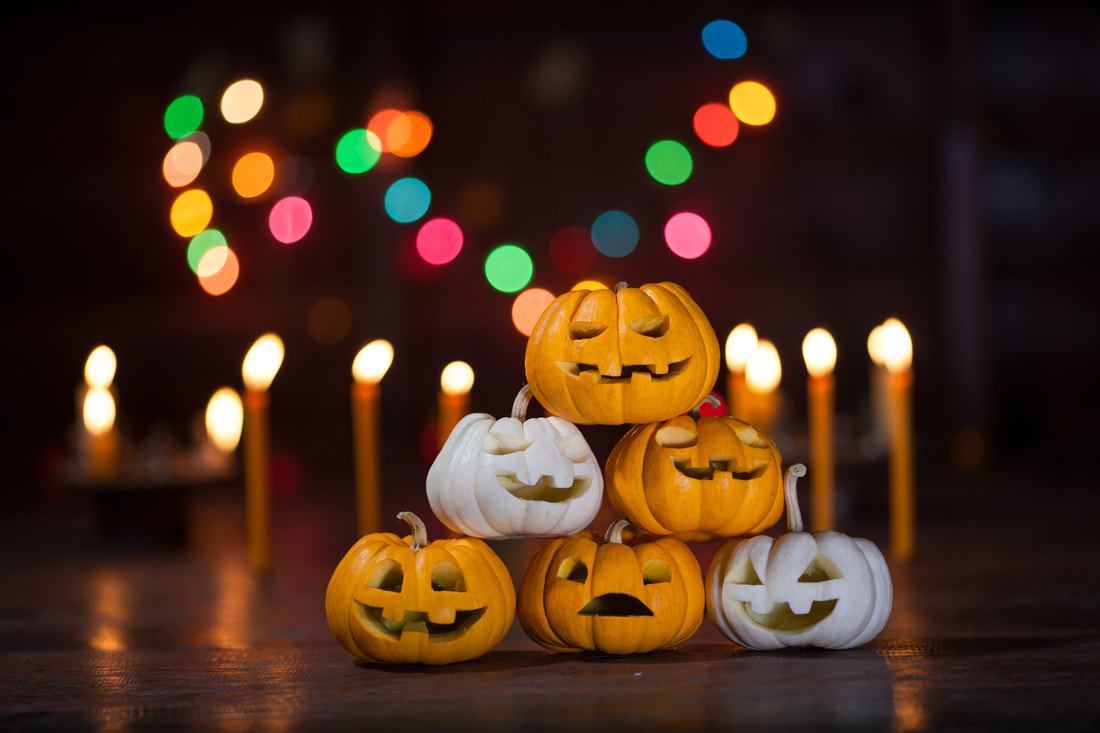Amang the bonie winding banks,
Where Doon rins, wimplin, clear;
Where Bruce ance rul'd the martial ranks,
An' shook his Carrick spear;
Some merry, friendly, countra-folks
Together did convene,
To burn their nits, an' pou their stocks,
An' haud their Halloween
Fu' blythe that night.
- Halloween, Robert Burns
The most spooktacular night of the year is nearly upon us. From pagan rite to the kind of shopping bonanza that gives retail CEOs wet dreams, the ancient holiday has remained firmly entrenched in our calenders.
Look at this stanza from Robert Burns’ 1785 poem, Halloween. In between the Scots-laden lines, it contains one of the earliest recorded uses of the term ‘Halloween.’ In fact, some scholars credit the Scottish poet with popularising the word, a nifty contraction of All Hallow’s Eve, or in Scots, Allhallow-even.
Burns’ own footnotes define Halloween as follows: “[It] is thought to be a night when witches, devils, and other mischief-making beings are abroad on their baneful midnight errands; particularly those aerial people, the fairies, are said on that night to hold a grand anniversary.” It’s fitting that a Scottish poet brought Halloween as a term to popularity as the holiday is Celtic in origin, in the old Celtic calendar it was the final night of the year.
Etymology aside, how did we go from Samuin, the Celtic end-of-year celebrations, to the rather odd tradition of dressing our small children up as mischief-making beings who traipse the neighbourhood looking for candy?
Trick or treating has become a mainstay of Halloween, and while for most of the 20th Century it was largely confined to North America, the modern tradition is moving to other parts of the world.
Historically, dressing up began because the Celts celebrated the end of the year by donning evil spirits costumes. Celtic lore has it that as we change years, the dead and the living overlap and demons return to mortal soils again. Dressing up as these creatures was a way to keep safe — if you happened to encounter a real underworld spirit, it would think that you, the costumed human, was one of them.
Then a bit of a shift occurred when the Catholic church got involved and claimed the holiday as its own (which they did for a few others, too). Beginning in the eighth century, the Catholic church put some effort and thought into stamping out ancient Samuin traditions. It’s the church who coined the terms All Hallows Even (which became Halloween), All Soul’s Day, and All Saints’ Day. Many Samuin traditions were adjusted to fit these festivities and by the eleventh century, the Church too had embraced the costume tradition.
Early trick or treaters were known as soulers. Children and poor adults would visit neighbours asking for food and money in return for songs or prayers, often in the name of the dead. One souling tune originated in the late 19th century and was later adapted by both Peter, Paul and Mary (of Puff the Magic Dragon fame) and Sting:
A soul! a soul! a soul-cake!
Please good Missis, a soul-cake!
An apple, a pear, a plum, or a cherry,
Any good thing to make us all merry.
One for Peter, two for Paul
Three for Him who made us all.
Later, souling became guising, from “disguise” and the children would offer a performance of some kind in return for fruit or money. It’s thought that guising as a practice made its way to North America with Scottish and Irish immigrants in the 19th and 20th centuries. In the US, the original term was dropped, but in Scotland, it still prevails today — one recent headline reads: “Scottish Government officially calls for no guising on Halloween”.
Trick or treating in North America became standard in the 1920s and 30s, predominantly on the west coast at first but the tradition slowly spread. After the world war sugar rations lifted, Halloween’s popularity surged and trick or treating was solidified as a US tradition. The earliest known reference to the term comes from the November 4, 1927 edition of the Blackie, Alberta Canada Herald:
“Hallowe’en provided an opportunity for real strenuous fun. No real damage was done except to the temper of some who had to hunt for wagon wheels, gates, wagons, barrels, etc., much of which decorated the front street. The youthful tormentors were at back door and front demanding edible plunder by the word “trick or treat” to which the inmates gladly responded and sent the robbers away rejoicing.”
In the 80s, trick or treating began to jump back across the Atlantic to England, where it was met with some resistance. Many viewed the holiday as a US cultural import and resented the commercial aspects of the holiday. It remained popular in Scotland and Ireland, however, thanks to the Celtic heritage. The 21st century has seen Halloween and trick or treating become common in nations where it was barely observed before, perhaps because of an increasingly globalized, interconnected world and the advent of social media. Or perhaps because Halloween provides the perfect excuse for a party, for both old and young people, and if Western history has taught us anything, it’s that any excuse for a party is a good excuse, whether we’re dressed as mischief-making beings or not!

 RSS Feed
RSS Feed